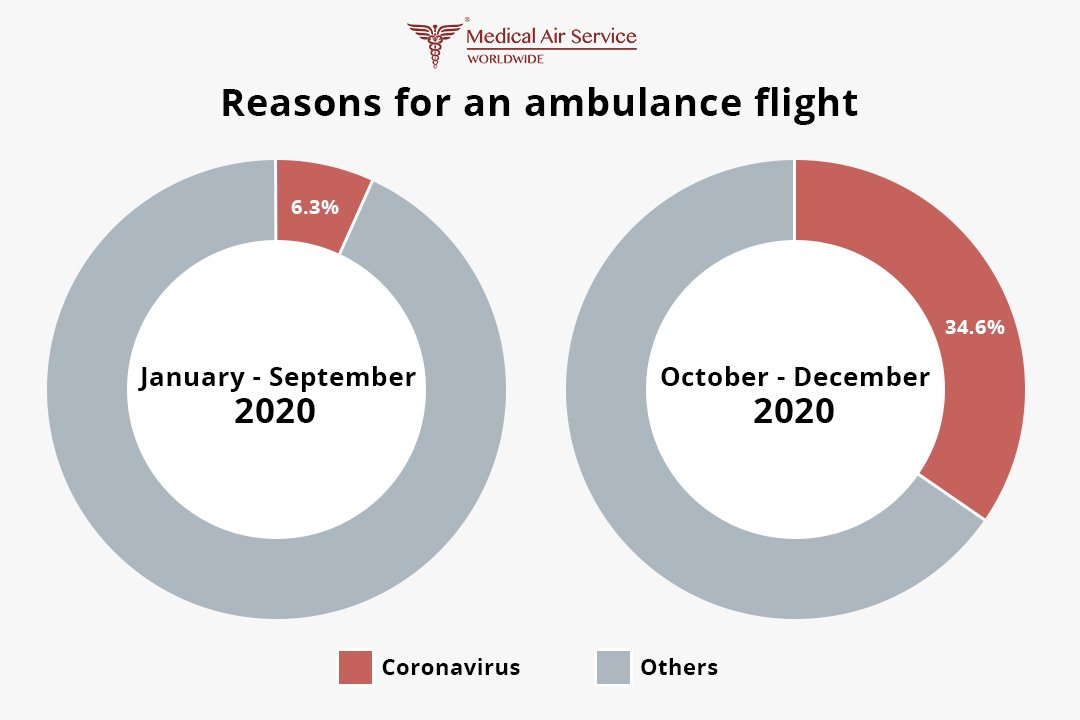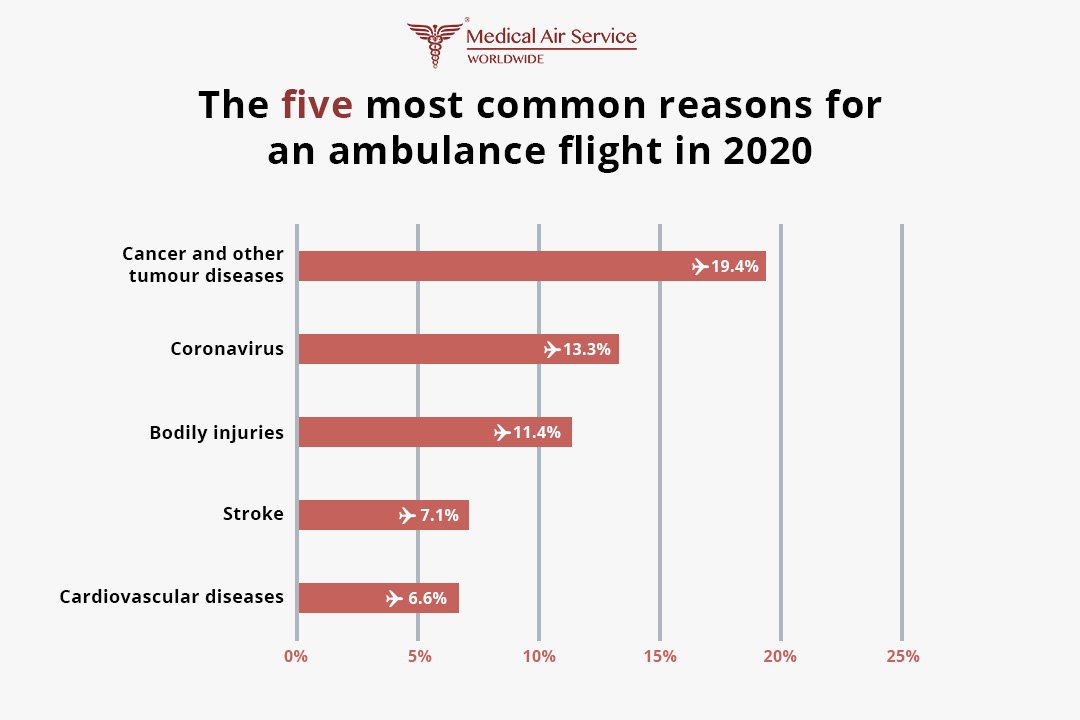In almost every country in the world, the second wave of Coronavirus caused dramatic changes in autumn 2020, including in the use of ambulance flights: in October, November and December 2020, one in three flights operated by Medical Air Service (34.6%) took place because the patient had Coronavirus (COVID-19). For comparison: for the first nine months of the year, it was only one in sixteen ambulance flights (6.3%).

Increase in COVID-19 ambulance flights in autumn 2020: possible reasons
Since all of our data relates to our worldwide operations, it is not possible to draw conclusions about the success or failure of Coronavirus measures in individual countries. However, the significant increase in ambulance flights for Coronavirus patients is in line with the significant increase in the number of COVID-19 cases observed in many countries in the autumn of 2020 – the so-called ‘second wave’.
The onset of cold weather in the northern hemisphere led to an increased spread of the virus. In addition, travel behaviour in many countries was still quite relaxed during the autumn. Thus, a relatively large number of holidaymakers and business travellers became infected with COVID-19 during their stay abroad. As with many other diseases, some patients then wished to return home as quickly as possible.
This was not only due to the medical situation in the country they were staying in, which may not have been as good as in their own country – in addition to ambulance flights for patients with severe Coronavirus symptoms, we also transported many infected patients with mild or no symptoms – the unpleasant prospect of having to quarantine for several weeks in a foreign country was also a contributing factor. Because the patient can remain completely isolated during an ambulance flight, the quarantine regulations do allow such transfer flights.
The most common reasons for ambulance flights in 2020
Looking at the whole of 2020, COVID-19 was not the most common reason for taking an ambulance flight. With a share of 13.3% of ambulance flights, the virus comes in second place. Flights for patients with cancer and other tumour diseases were the most common, with a total share of 19.4%. In addition to the generally quite high prevalence of tumour diseases, there is an unusual diversity of reasons why patients with these conditions may need to take an ambulance flight.
As with any other diseases, a tumour may be diagnosed during a stay abroad and patients often wish to return home for treatment. However, particularly with cancer, some patients may desire treatment abroad to consult world-renowned specialists or to try out alternative treatment methods. Finally, cancer is the most common reason for palliative ambulance flights. When all treatment options have been exhausted, many patients want to spend their last days with their family or to see their homeland for the last time.

The third, fourth and fifth most common reasons for taking an ambulance flight are classic acute situations. Injuries during a stay abroad often occur after accidents or falls – for example, multiple injuries following a traffic accident or a hip fracture after a fall in a hotel room. Often, patients in this situation place greater trust in the hospitals and rehabilitation facilities in their home country and therefore request a medical repatriation by plane. In 2020, 11.4% of our ambulance flights transported patients with bodily injuries.
Following initial emergency treatment, strokes (7.4%) often require extensive rehabilitation, which many of those affected want to receive in a familiar environment. Accordingly, patients and their families frequently opt for medical repatriation. The same applies to cardiovascular diseases, which, of course, also include heart attacks. Cardiovascular illness was the reason for an ambulance flight in 6.6% of all cases.
Get in touch now